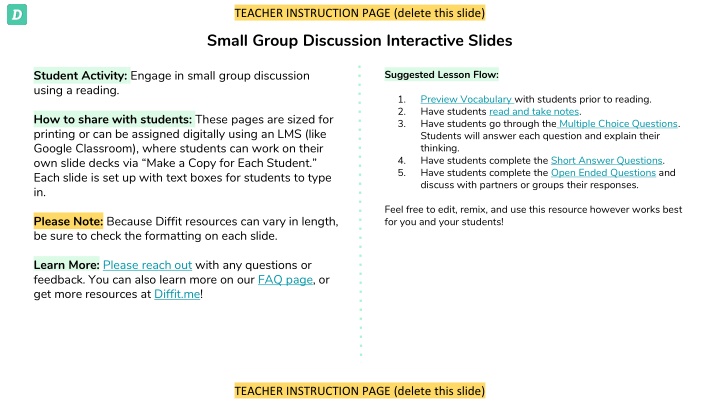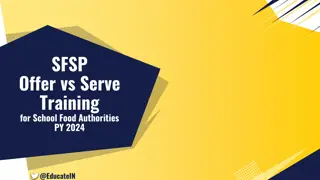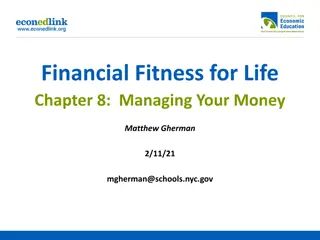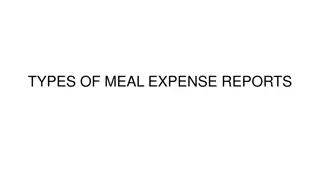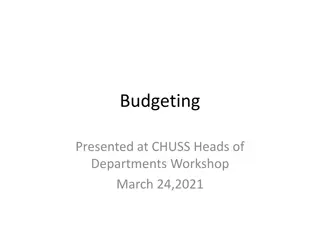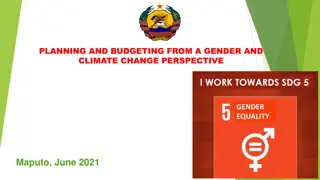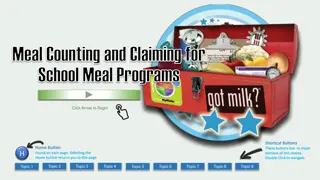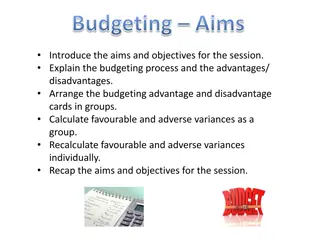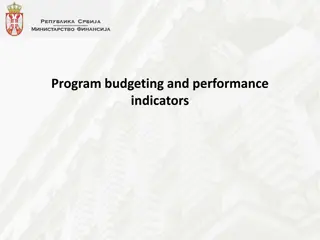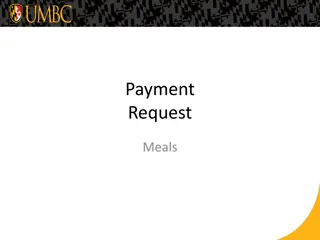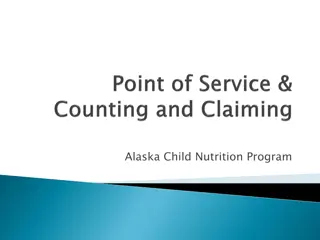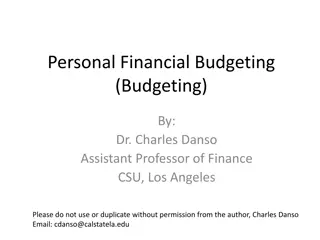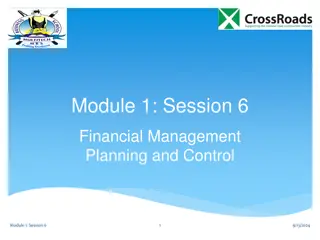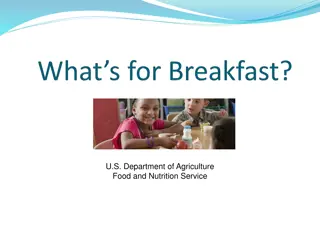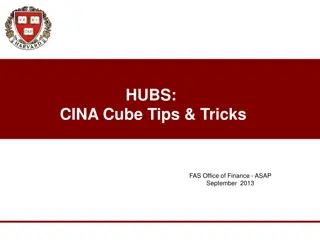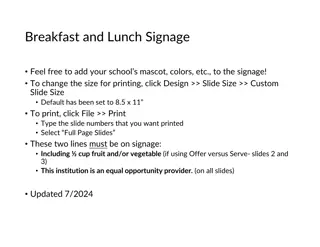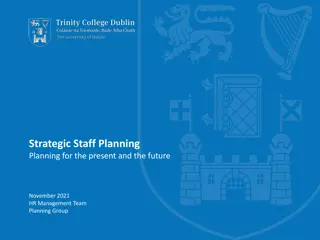Effective Strategies for Budgeting and Meal Planning
Explore vocabulary related to budgeting and meal planning, guiding students through the importance of reducing waste and saving money by utilizing staple foods and pantry items. Students will engage in interactive activities to reinforce key concepts and develop practical skills for cost-effective meal preparation.
Download Presentation

Please find below an Image/Link to download the presentation.
The content on the website is provided AS IS for your information and personal use only. It may not be sold, licensed, or shared on other websites without obtaining consent from the author.If you encounter any issues during the download, it is possible that the publisher has removed the file from their server.
You are allowed to download the files provided on this website for personal or commercial use, subject to the condition that they are used lawfully. All files are the property of their respective owners.
The content on the website is provided AS IS for your information and personal use only. It may not be sold, licensed, or shared on other websites without obtaining consent from the author.
E N D
Presentation Transcript
TEACHER INSTRUCTION PAGE (delete this slide) Small Group Discussion Interactive Slides Student Activity: Engage in small group discussion using a reading. Suggested Lesson Flow: Preview Vocabulary with students prior to reading. Have students read and take notes. Have students go through the Multiple Choice Questions. Students will answer each question and explain their thinking. Have students complete the Short Answer Questions. Have students complete the Open Ended Questions and discuss with partners or groups their responses. 1. 2. 3. How to share with students: These pages are sized for printing or can be assigned digitally using an LMS (like Google Classroom), where students can work on their own slide decks via Make a Copy for Each Student. Each slide is set up with text boxes for students to type in. 4. 5. Feel free to edit, remix, and use this resource however works best for you and your students! Please Note: Because Diffit resources can vary in length, be sure to check the formatting on each slide. Learn More: Please reach out with any questions or feedback. You can also learn more on our FAQ page, or get more resources at Diffit.me! TEACHER INSTRUCTION PAGE (delete this slide)
Review Vocabulary Vocabulary Term Definition Example Sentence budget A plan for how to spend and save money. My mum made a budget to help us save money for our holiday. reduce To make something smaller or less in size, amount, or importance. We need to reduce the amount of waste we produce. ingredients The foods or substances that are used to make a particular dish. The recipe calls for several ingredients, including flour, sugar, and eggs. pantry A small room or cupboard where food is kept. I need to go to the pantry to get some canned tomatoes for the sauce. season A period of time during the year when certain fruits and vegetables are ready to be harvested and eaten. In the Autumn, we can enjoy delicious apples and pumpkins because they are in season.
Read and Take Notes Take Notes Here: It is important to think about the money we spend on ingredients, not just the meal itself.
Read and Take Notes Take Notes Here: First, you can build your meals around staple foods. Staple foods are things like rice, corn, potatoes, and vegetables. These foods are cheap, easy to store, and yummy. You can add other ingredients like meat or sauces to make your meals even more delicious. Building meals around staple foods is a great way to save money.
Read and Take Notes Take Notes Here: Next, before you go shopping or cook, check your pantry. This means looking at what you already have at home. By using what you already have, you can save money and reduce food waste. You can even make a meal plan based on what you have in your pantry. This way, you won't buy things you don't need.
Read and Take Notes Take Notes Here: Another tip is to think about multiple meals for each ingredient. For example, if you buy a lot of canned green beans because they are on sale, think about different ways you can use them. You can make a stir-fry one day and a salad the next. This way, you can use up all your ingredients, and have different meals every day.
Read and Take Notes Take Notes Here: When you're on a tight budget, it's important to make mealtimes fun. You can shop with others, like your family or friends. This way, you can learn about different foods and how to save money. You can also make mealtimes a social experience by eating with others. It's more fun to eat with friends or family, and it can make your meals even better.
Read and Take Notes Take Notes Here: Lastly, try to buy foods that are in season. This means buying fruits and vegetables that are grown at the same time of year. In-season foods are usually cheaper and taste better. Plus, you can have different foods throughout the year. So, make sure you check what's in season before you go shopping.
Read and Take Notes Take Notes Here: By following these tips, you can make great meals on a budget, and reduce the cost of making meals. So, start planning your meals, checking your pantry, and shopping smart. You'll be able to enjoy delicious and nutritious meals without spending too much money. Happy cooking!
Multiple Choice Question Which answer did you pick and why? What is one tip the text provides for making meals on a budget? A) Buy foods that are in season. B) Always shop alone. C) Only use expensive ingredients. D) Throw away any leftovers.
Multiple Choice Question Which answer did you pick and why? According to the text, why should you check your pantry before shopping or cooking? A) To make mealtimes more fun. B) To reduce food waste and save money. C) To learn about different foods. D) To have different meals every day.
Multiple Choice Question Which answer did you pick and why? What is the main idea of this passage? A) Eating with others makes meals more enjoyable. B) Using staple foods can help save ..money on meals. C) Shopping smart is the key to delicious ..meals. D) Buying foods in season is important for ..taste and variety.
Short-answer Question Write your response below: What are staple foods?
Short-answer Question Write your response below: Why is it important to check your pantry before shopping or cooking?
Short-answer Question Write your response below: Why should you buy foods that are in season?
Discuss With Your Group How can you use staple foods to make meals on a budget in your own life? Instructions: Start by writing down your answer to the question above. Include in your response what you learned from the reading, and any background knowledge or real-world connections you can make to the prompt. Your Response: Student #1: Student #2: Student #3: Share your response with three classmates. Take notes on their responses as well in the provided boxes.
Discuss With Your Group What are some ways you can reduce food waste and save money when cooking at home? Instructions: Start by writing down your answer to the question above. Include in your response what you learned from the reading, and any background knowledge or real-world connections you can make to the prompt. Your Response: Student #1: Student #2: Student #3: Share your response with three classmates. Take notes on their responses as well in the provided boxes.
Discuss With Your Group Why is it important to make mealtimes fun and social? How can you do this in your own life? Instructions: Start by writing down your answer to the question above. Include in your response what you learned from the reading, and any background knowledge or real-world connections you can make to the prompt. Your Response: Student #1: Student #2: Student #3: Share your response with three classmates. Take notes on their responses as well in the provided boxes.
Comparison: List Similarities and Differences My Answer Similarities in Answers Groups Answer
